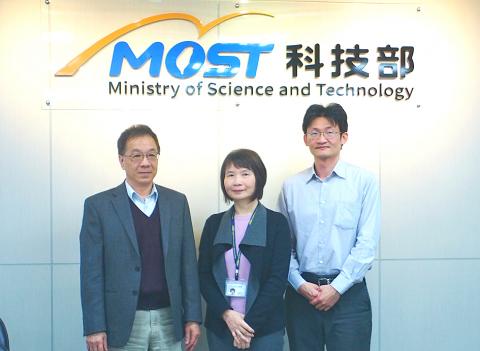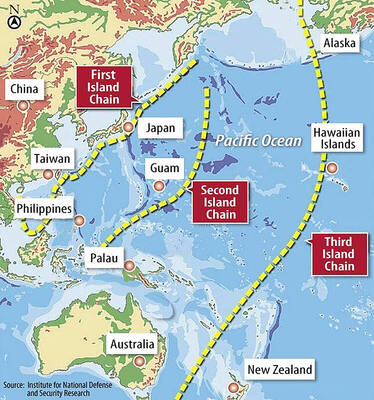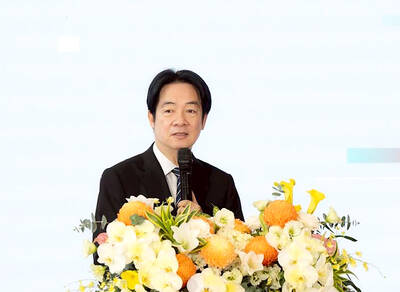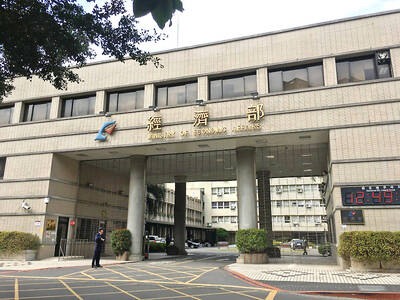Although the number of people in Taiwan who identify as Taiwanese has fallen since its peak of 75.15 percent in 2015, it has remained steady at 60 to 70 percent, the Ministry of Science and Technology yesterday told a news conference announcing the results of its Social Change Survey, which has been conducted for more than three decades.
In 1995, 32.13 percent of people in Taiwan identified as Taiwanese, Academia Sinica Institute of Sociology research fellow Lin Thung-hong (林宗弘) said.
It has since skyrocketed 43 percentage points and in 2015 topped 75 percent, he said.

Photo: Chien Hui-ju, Taipei Times
Although the theme of the survey varies from year to year, questions on important topics such as national identity are almost always included, he said.
The questionnaire asked participants whether they identified as “Taiwanese, “both Taiwanese and Chinese,” “both Chinese and Taiwanese” or “Chinese,” Lin said.
In 1992, when the question was first included, more than half of respondents said they have a dual national identity, but by 2015, the proportion had fallen to about 23 percent, he said.
For this year’s questionnaire, the researchers included questions about emerging technologies and the risks they pose, including views toward artificial intelligence, online information security, fake news and nuclear energy, he said.
The findings could also be applied to policymaking, researchers said.
For example, in 2017, 48.39 percent of men who earned less than NT$30,000 per month were unmarried — the highest ever, Lin said.
This year, the government raised the minimum monthly wage to NT$23,100, he said, adding that if employment conditions for young workers continue to improve, the marriage and fertility rates would rise.
The survey was begun by the ministry — which was then called the National Science Council — in 1984.
Topics have included family, education, social stratification, social mobility, political culture, communication, culture and value judgements, religion, interpersonal relations and social networks, institute research fellow and project leader Fu Yang-chih (傅仰止) said.
The survey has collected more than 125,000 responses over 34 years, researchers said.
It has been called one of the world’s largest surveys of its kind, its Web site said.
Taiwanese researchers have also participated in international collaborations to compare results from the survey with those from more than 30 other nations, Fu said.

LIMITS: While China increases military pressure on Taiwan and expands its use of cognitive warfare, it is unwilling to target tech supply chains, the report said US and Taiwan military officials have warned that the Chinese People’s Liberation Army (PLA) could implement a blockade within “a matter of hours” and need only “minimal conversion time” prior to an attack on Taiwan, a report released on Tuesday by the US Senate’s China Economic and Security Review Commission said. “While there is no indication that China is planning an imminent attack, the United States and its allies and partners can no longer assume that a Taiwan contingency is a distant possibility for which they would have ample time to prepare,” it said. The commission made the comments in its annual

DETERMINATION: Beijing’s actions toward Tokyo have drawn international attention, but would likely bolster regional coordination and defense networks, the report said Japanese Prime Minister Sanae Takaichi’s administration is likely to prioritize security reforms and deterrence in the face of recent “hybrid” threats from China, the National Security Bureau (NSB) said. The bureau made the assessment in a written report to the Legislative Yuan ahead of an oral report and questions-and-answers session at the legislature’s Foreign Affairs and National Defense Committee tomorrow. The key points of Japan’s security reforms would be to reinforce security cooperation with the US, including enhancing defense deployment in the first island chain, pushing forward the integrated command and operations of the Japan Self-Defense Forces and US Forces Japan, as

‘TROUBLEMAKER’: Most countries believe that it is China — rather than Taiwan — that is undermining regional peace and stability with its coercive tactics, the president said China should restrain itself and refrain from being a troublemaker that sabotages peace and stability in the Indo-Pacific region, President William Lai (賴清德) said yesterday. Lai made the remarks after China Coast Guard vessels sailed into disputed waters off the Senkaku Islands — known as the Diaoyutai Islands (釣魚台) in Taiwan — following a remark Japanese Prime Minister Sanae Takaichi made regarding Taiwan. Takaichi during a parliamentary session on Nov. 7 said that a “Taiwan contingency” involving a Chinese naval blockade could qualify as a “survival-threatening situation” for Japan, and trigger Tokyo’s deployment of its military for defense. Asked about the escalating tensions

The Ministry of Economic Affairs said it plans to revise the export control list for strategic high-tech products by adding 18 items under three categories — advanced 3D printing equipment, advanced semiconductor equipment and quantum computers — which would require local manufacturers to obtain licenses for their export. The ministry’s announcement yesterday came as the International Trade Administration issued a 60-day preview period for planned revisions to the Export Control List for Dual Use Items and Technology (軍商兩用貨品及技術出口管制清單) and the Common Military List (一般軍用貨品清單), which fall under regulations governing export destinations for strategic high-tech commodities and specific strategic high-tech commodities. The